Regarding the knowledge of beer, it is enough to read this article
Author:Knowledge Society Time:2022.09.09

Starting from raw materials. Beer consists of 4 core raw materials: malt, beer, yeast and water. How they mix and match and complement each other are critical. For centuries, winemakers have exhausted their thoughts for highlighting these ordinary raw materials. The final finished product may be excellent beer, or it may be a "wastewater" that is not suitable for pouring flowers.
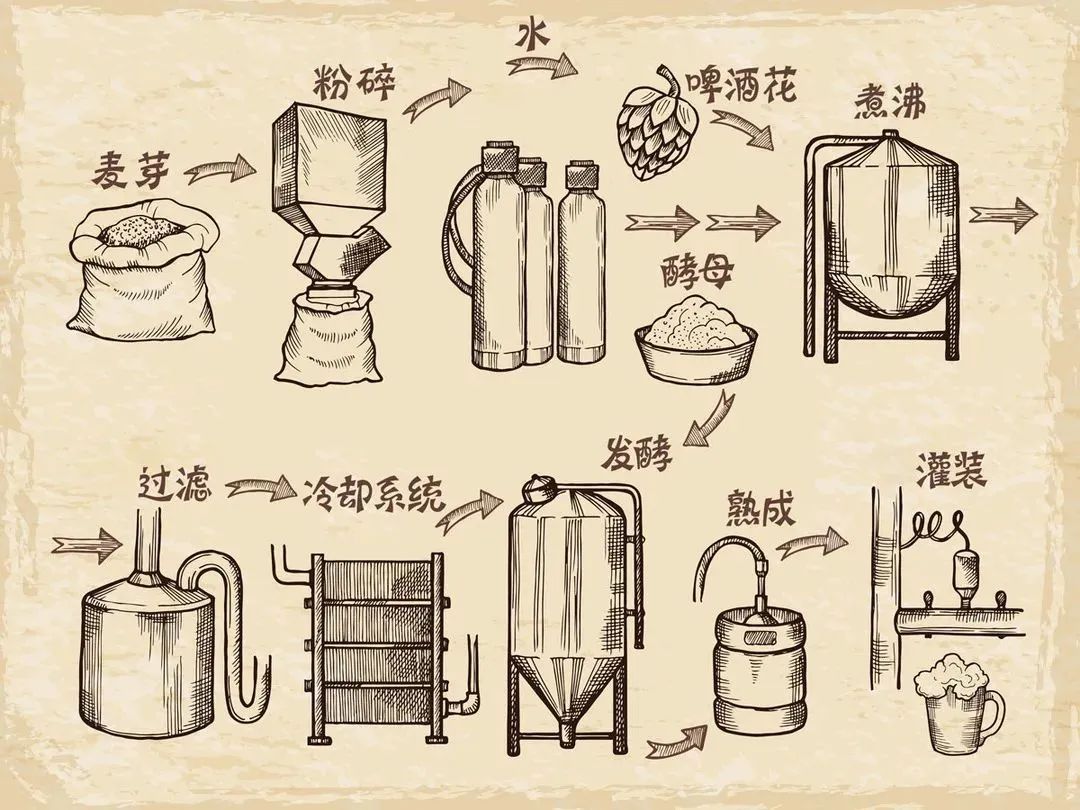
Strape production process schematic diagram
Malt -Padding the Cushion Blood
Barley's protein content is low, sugar content is high, and it is not suitable for human staple foods, but it is very suitable for fermentation and manufacturing alcohol. In order to activate various enzymes in barley, we must first make malt: first soak the barley with water. When the protein is separated from the starch, the wheat grains begin to germinate, spread out the germinated barley, absorb the humid air, and let the residual starch in the germination process during the germination process. break down. Then enter the drying stage, bake the malt to exudes the unique fragrance. Finally, the key to testing the technology of winemakers, continuously add water to grind and mix malt, and then boil to sugar, so that the predecessor of the beer -malt.
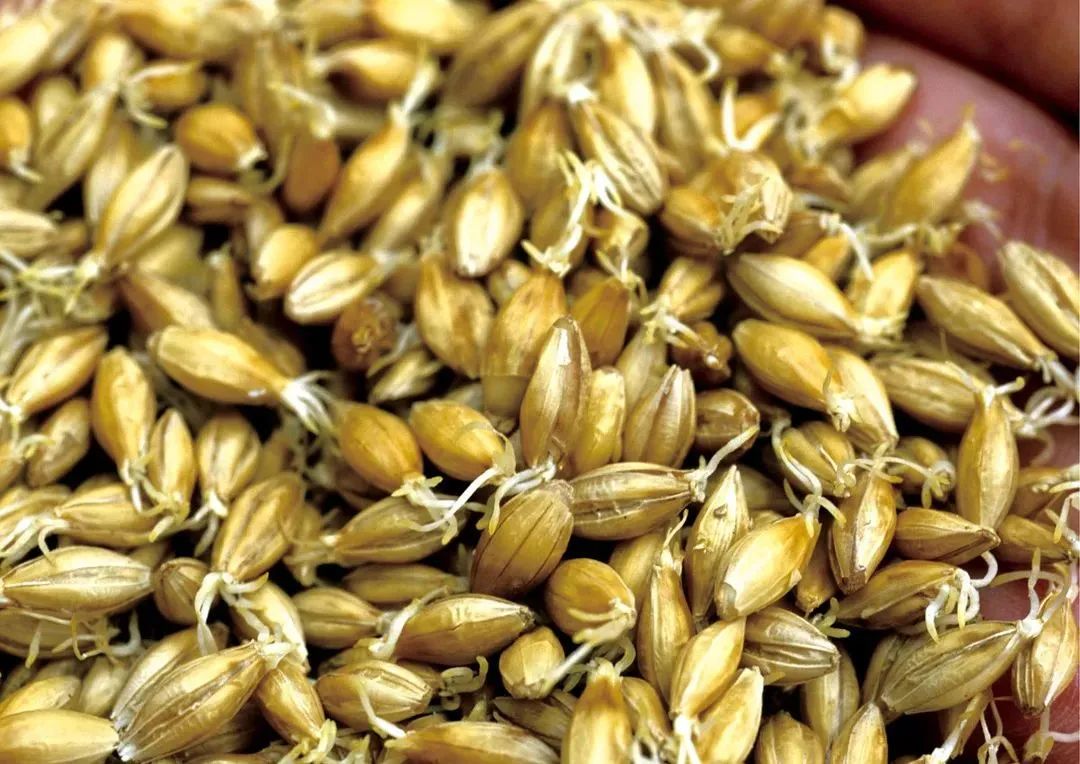
Malt is one of the main raw materials of beer, and its production process is mainly divided into four steps: soaking, germination, drying and baking.
Malt production has a great impact on the appearance, aroma and flavor of finished beer. The nuts and caramel flavia produced by the malt baking give the beer unique flavor; its dryness, baking time, and temperature can make the beer present a variety of colors from light yellow, amber to brown -red, brown black and even dark. At present, the multi -color of the beer industry represents the color of malt, which is an important indicator of the winery to control the color of beer and maintain the stability of the beer quality. The color grading method has the European standard (EBC) and the US standard (SRM). my country currently uses European standards.
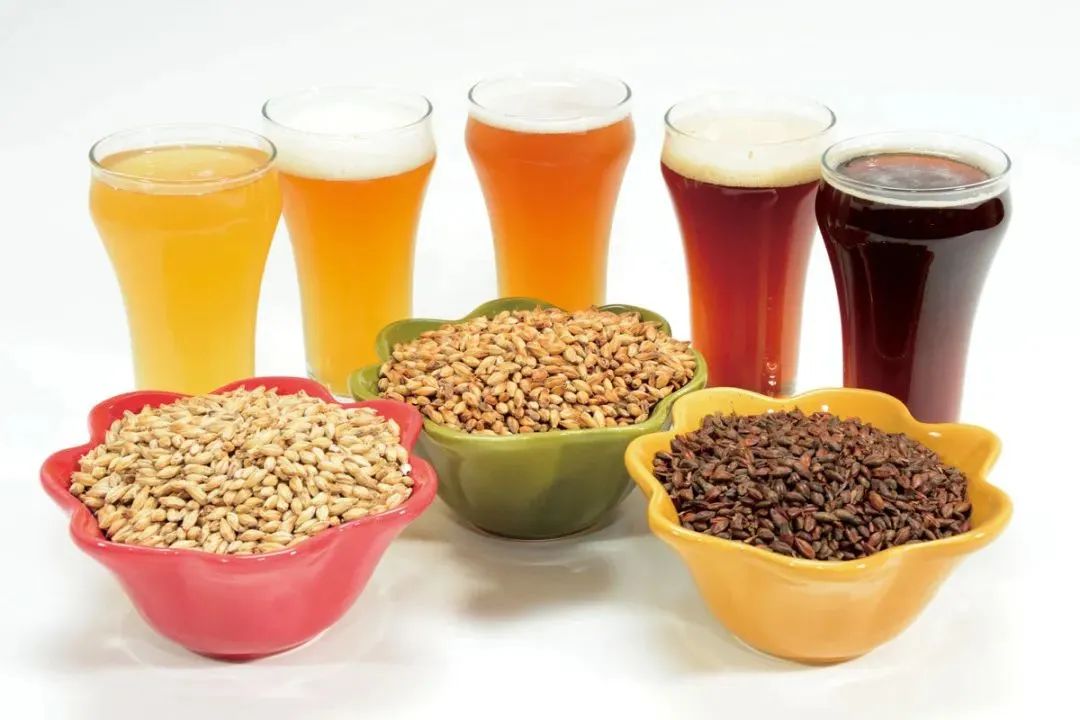
The production of malt has a great impact on the appearance, aroma and flavor of beer.
When beer enthusiasts talk about beer, they usually refer to maltness, not alcohol content. Malto is a hard indicator for identifying beer, representing the sugar content of the malt juice used in brewing beer. For example, maltness is 10 ° P (abbreviation of Plato, commonly known as sugar), which means that each liter of malt is 100 grams of sugar. Malto is proportional to alcohol. According to the content of the two, beer is roughly divided into 3 categories: malto is 6 ° ~ 8 °, a low concentration type, about 2%of the alcohol; , For a medium concentration, the alcohol content is about 3.5%; the malt degree is 14 ° ~ 20 °, which is a high concentration, and the alcohol content is 4%to 5%. In recent years, some beer vendors are unwilling to be labeled "low wine" and also played the limit challenge of the accuracy of wine. In the end, the title of "the world's most intense beer" was made by Scotland beer beer dealer BrewMeister "Snake Venom" was picked, and the alcohol content reached an amazing 67.5%.
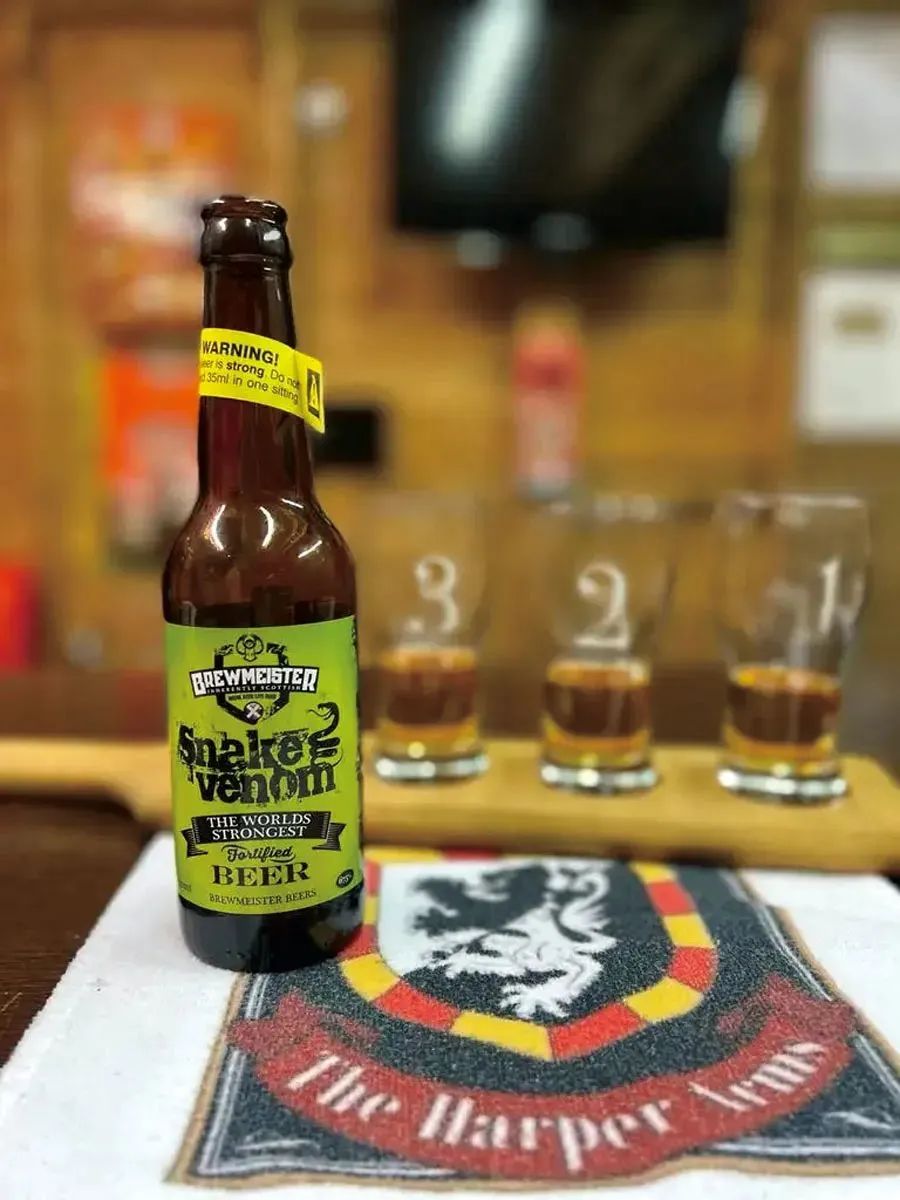
The "snake venom" alcohol content made by Scottish beer dealer Bronte is as high as 67.5%, which is the most intense beer in the world.
Beer is fermented wine. Generally, the alcoholic tolerance of yeast is less than 10%. How does the winemaker break through the limit of the accuracy of the wine? The answer is ice distillation technology. It is said that for the first time, the winemaker purified beer through ice distillation technology for a accident. The story originated from Reichelbrau Brewery, Bavaria, Bavaria, Germany. On a winter day, the tired winery workers left a barrel of Bark beer outside the warehouse, and the Blizzard suddenly fell at night. The next day, the barrel was burst, and the beer inside was frozen into ice. At this point, the winemaker simply opened the ice to drink the remaining beer. Unexpectedly, due to some water solidification, the liquid liquid became extremely fragrant. Since then, the Germans have begun to make high -concentration beer using the different ingredients in the wine, and the famous EISBOCK was born. Compared with the beer itself, Bingbok has more promoted the development of cold extract and purifying technology, and this process has been widely used into the food field. In recent years, the Bingbok drinks in the tea industry and coffee industry are based on ice distillation and refined milk.
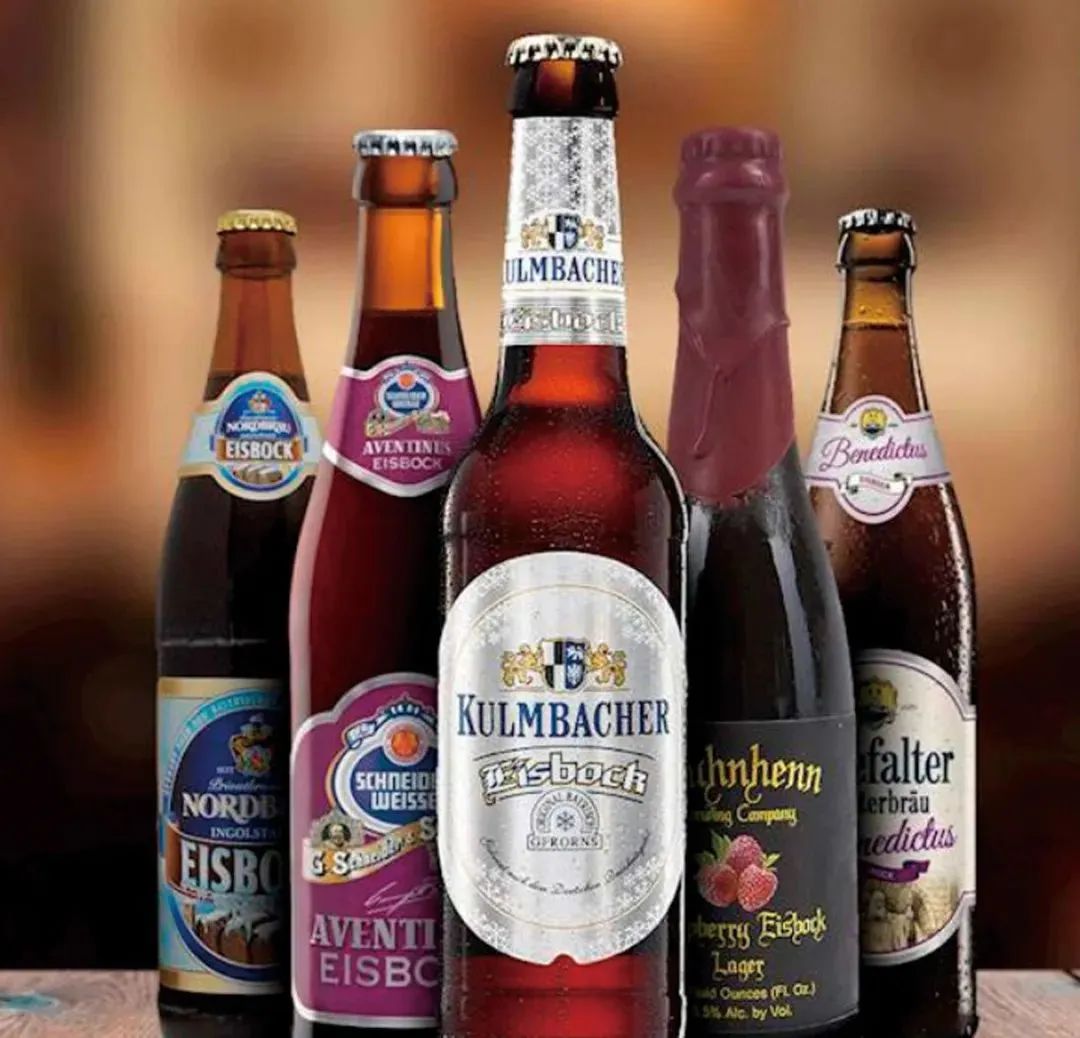
The Germans used the different ingredients of the wine to make high -concentration beer from the ingredients in the wine, and the famous Bingbok was born.
At first, malt specifically refers to Big malt, and then wheat buds also entered the field of beer brewing. Classic wheat beer has German white beer, Belgian white beer and American wheat beer. Compared with barley, the protein content of wheat is high, so the wine is cloudy and cloudy. From the perspective of winemaking technology, the starch in barley and wheat cannot be decomposed directly by yeast, and it must be hydrolyzed by enzymes. The content of enzymes in barley is naturally rich. As long as it is appropriate temperature and humidity, it can be obtained by germination, and wheat is difficult to achieve this. In addition, the bran skin of barley is also highly combined with wheat grains. After proper crushing, it becomes a natural filter bed, while a large amount of wheat needs to add rice shells as a filter bed, otherwise it will easily lead to poor outflow of malt. Therefore, even brewed wheat beer, barley is an indispensable raw material. The proportion of wheat in the formula is usually 30%to 70%.
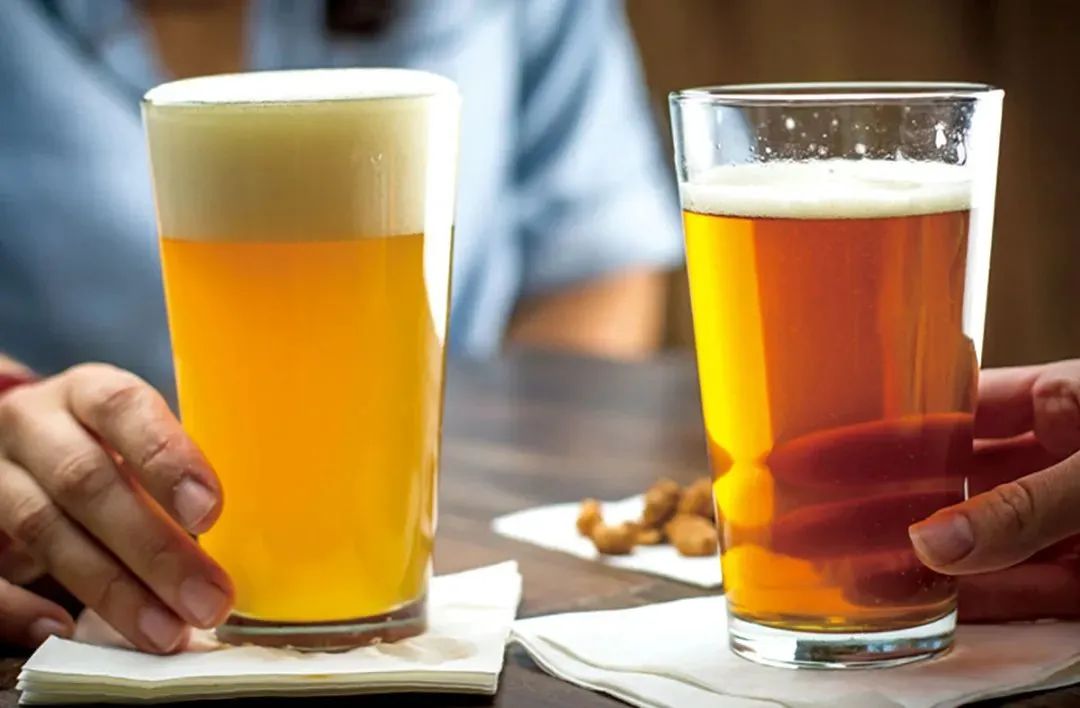
Compared with barley, the protein content of wheat is higher, so the wine is cloudy and cloudy.
Beer Bell -the dedication of bitterness and incense
Beer flower adds bitterness, aroma and flavor to beer. If the malt is skinny, the beer is sexy.
The early beer brewing did not use beer. Beer acidity has spoiled the winemakers for several centuries. In order to extend the storage time, of course, in order to cover up the odor, the winemaker constantly tries to add various spices. In the Needland region of the Middle Ages, Gruit, a mixed herbal herbs such as Shinan, Cao Cao, and Muso Muso, is generally used as beer additives. Belgian wheat beer has the tradition of adding orange peels, yán sui, alias, alias Hu, coriander, and fragrant) seeds. The earliest text record of the use of beer brewing can be traced back to 822, and Abbot Adalhard, the president of the Bendoni Monastery of the Soman Valley in northern France, wrote it into the management rules of the monastery. By the 13th century, beer hills began to grow widely in Europe, becoming the main seasoning of beer. Beer flower is a perennial herb of the same family as the cannabis, a scientific name of snake hemp. Its active ingredients are powder -like yellow sticky resin, which exist in the gland of the female plant. There are two main ingredients of snakes, one is soft resin, that is, the source of the bitterness of beer; the other is the essential oil of hiva, which can give beer a variety of aromas and flavors. With the improvement of fermentation technology, people find that the natural bitterness of beer hills also helps to balance the sweetness in malt, inhibit the reproduction of mixed bacteria, and increase the persistence of beer foam.
Beer flower is a perennial entangled herb. It is usually supported by brackets when planting to let it climb up.
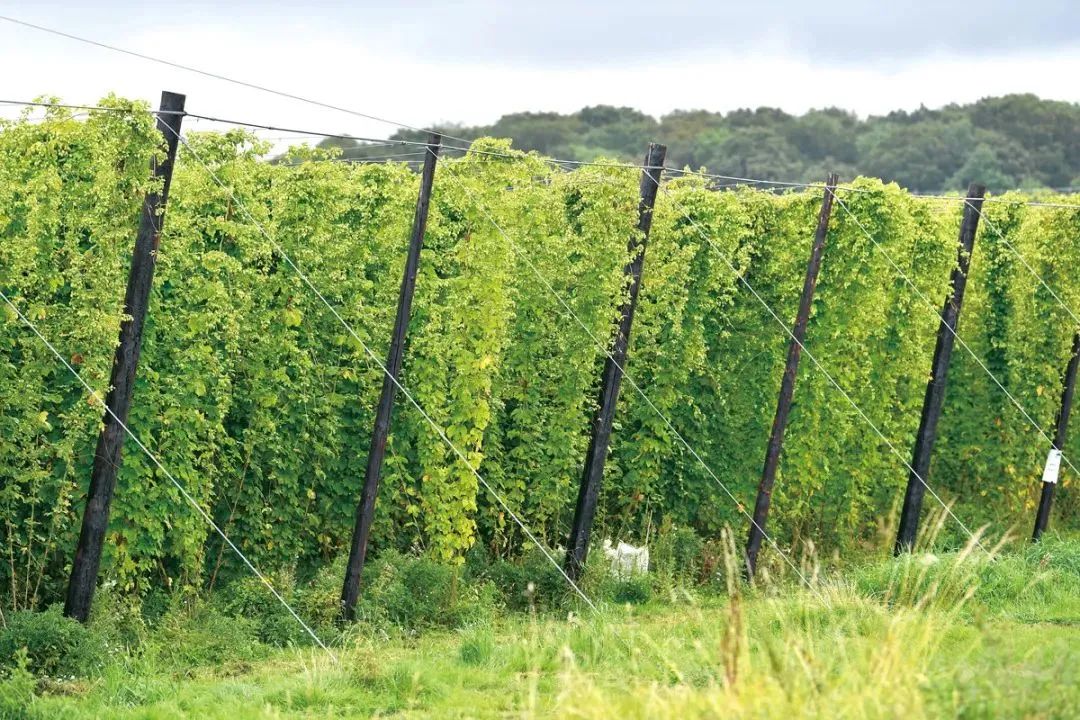
Female beer has a unique snake anesthesia, which is an important source of beer flavor.
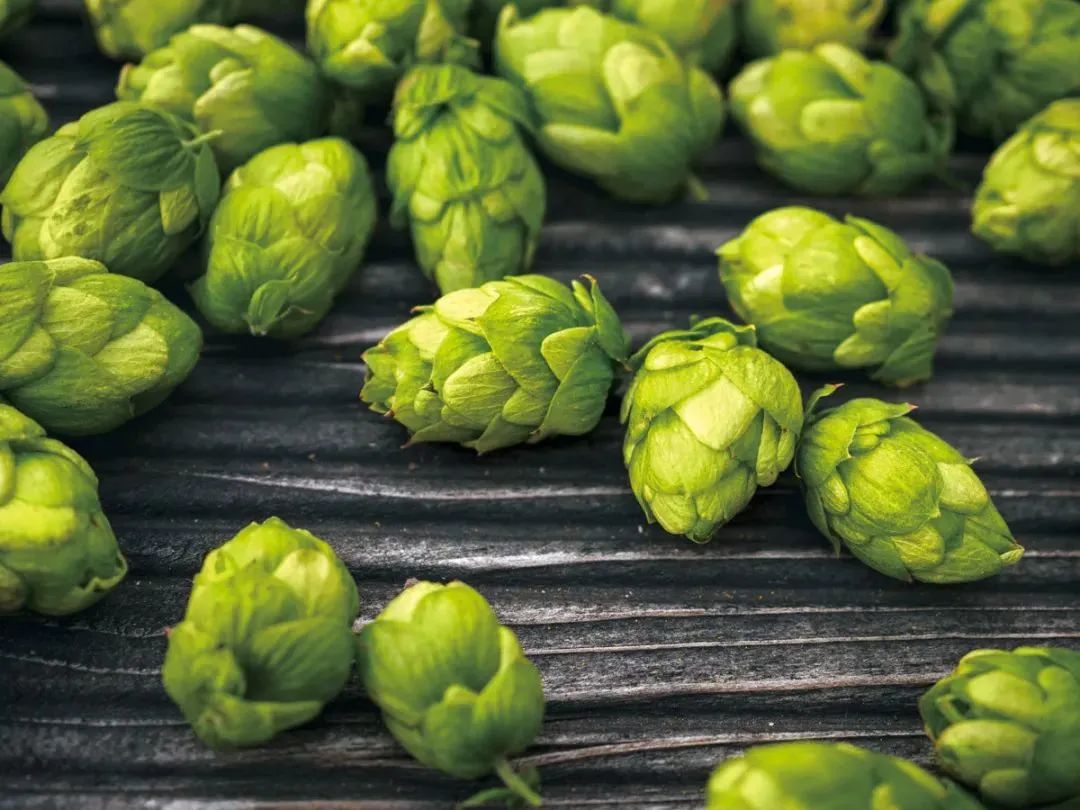
Snake hemp grows in regions with 40 ° to 50 ° latitude. The United States, Germany, the United Kingdom, and Czech Republic are all major beer production countries. More than 70%of the types of hills in the world today have been cultivated from the United States in recent decades. Four ancient beer flowers native to Central Europe -Saaz, Hallertau, Spalt, and Tettnage are recognized as "nobles in the hills". The Czech Republic of the Czech Republic is once the world's largest Sazz Poor plantation place. This hill with a round herb, moderate spicy and muddy aroma, and the bitterness is low. Flavor.
The beer granules are compressed by crushing the dried flower. Because the density of the particles is relatively compact and the space is small, the cost in transportation and storage is lower. Therefore, most beer plants will use beer granules to make beer.
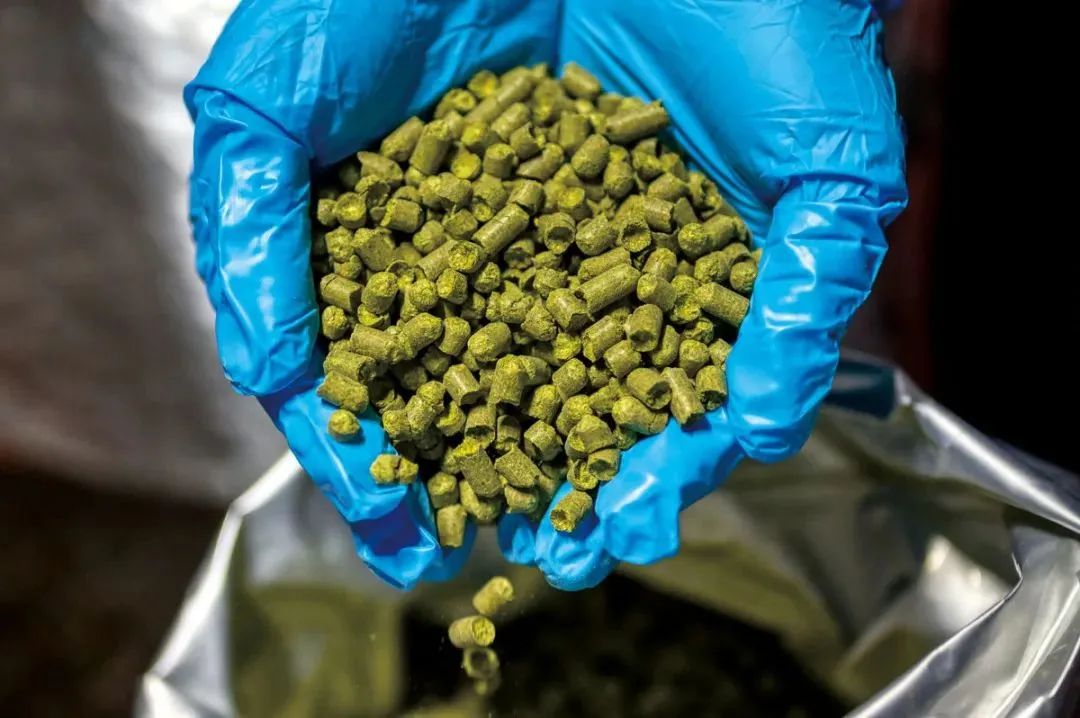
Before the 1950s, the supply of global beer flower has been monopolized for a long time. The cost of high -quality hills imported by the United States was expensive, which largely limited the development of craft beer to a large extent. Therefore, the U.S. Department of Agriculture launched the beer flower cultivation project, and in 1972, the first local standard beer Cascade was launched. Cascart has a strong and lasting flower fragrance, citrus and grapefruit fragrance. In order to stimulate its vitality, the California brewed winery is innovatively used to use the dried dried vitality, which brews a real American IPA —— Anchor Liberty Ale.
The full name of the IPA is "India Pale Ale" (India Pale Ale), which is born from the needs of the East India Corporation of the British East India in the 18th century. In the long range of Bangladesh's Gulf from the British bypass, wine is an indispensable pastime for crew. In order to solve the problem of fresh -keeping in long -distance transportation, the BOW breadrial winery in London invented a new recipe: increasing the concentration of the malt, and added a large amount of beer flower to extend the fermentation time of the beer in the barrel. The accuracy, bitterness, and aroma of beer and wine made by this increase. Later, this formula was borrowed and improved by the Bass winery on the BURTON UPON TRENT BURTON UPON TRENT. Following the footsteps of the British Industrial Revolution and overseas colonial expansion, the IPA conquered the world, and it was not until the 20th century Lag's home gradually became silent. This IPA trend was depicted by many realist painters at the time. In the famous "Bar of Goddess Play Hall" in the French painter Ma Na, the IPA, which was produced by the Bashe wine plant, appeared on both sides of the bar.
French painter Ma Na's oil painting "Bar of the Veridth Palace Hall". On both sides of the painting table, the IPA made by the Basan winery produced.
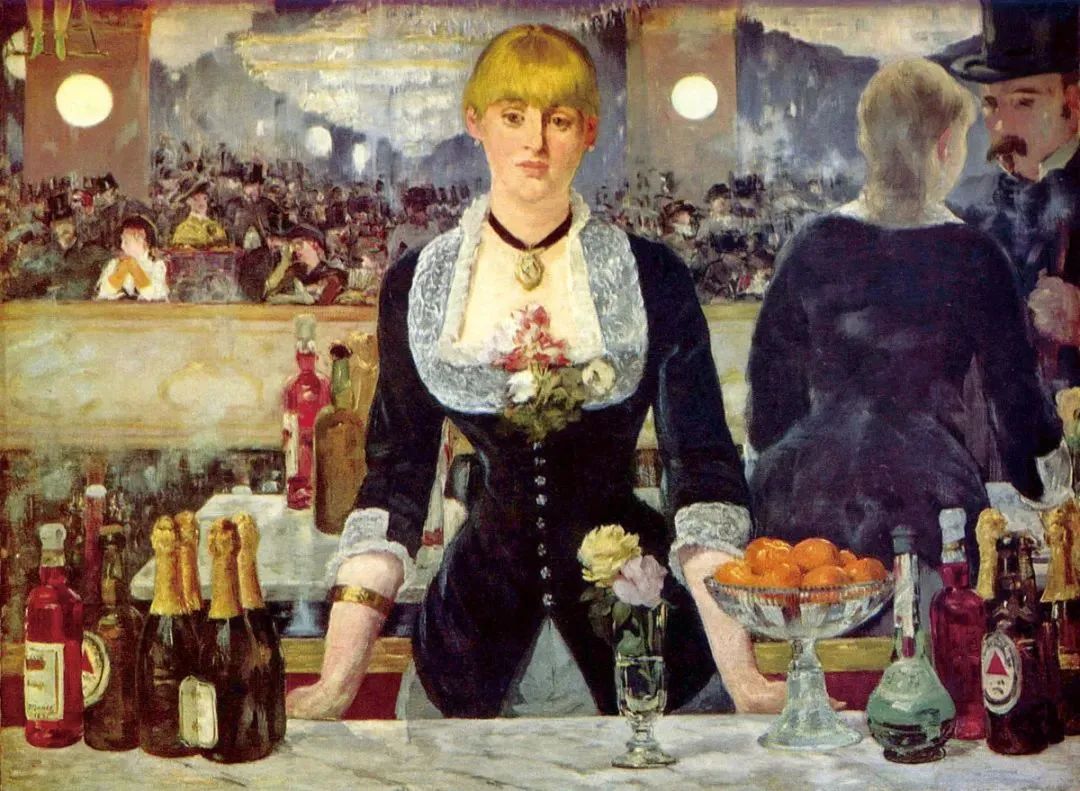
In fact, the name of the IPA is not named by the British, but when it is transferred from India to Australia, local newspapers are named by the local newspaper. With the diversification of the beer style, today's IPA is no longer the past. It represents a beer family with a strong wine flavor as the largest characteristic.
Modern winemakers try to quantify the bitterness of beer flowers as a way to control beer quality control. The common IBU is the International Bittering Units. Generally speaking, the IBU of beer is a common range from 20 to 45, and the taste is gentle; IBU is less than 20, and the existence of the hills is almost impossible; the beer with IBU greater than 45 is more bitter.
Yeast -real winemaker
With a glance at the beer glass, the eyes will be attracted by the color, clearness and creamy foam on the top. The carbonate gas in beer is often ignored, unless it is in bubbling on your nose or beating fiercely on the tongue. When the glass is near the glass, when the light penetrates the cup, the small bubbles come up from the bottom of the cup, like a spark in beer that passes out the aroma. This is the carbonate of yeast in beer -yeast swallow the sugar in the malt of the malt to produce alcohol and release carbon dioxide at the same time. Beer is not only variety, color, and flavor, but the blooming cups are also very particular about the shape and texture.
Fermentation is a delicate process. The oldest beer is automatically fermented without adding yeast, and now it is only this method made by Lambic, which is brewed by Senne Valley next to Brussels. In the Cantillon Brewery, the obtseng is cooled in the ventilation environment. The mountain wind continues to bring the peculiar microbial flora in the river valley into the fermentation pool. The participation of dozens of germs and lactic acid bacteria is precisely under the action of these microorganisms that the liquor presents unique sour and scent. Mixing different mature Lammi mixing secondary fermentation, can get another champagne -style beer -Guuze.
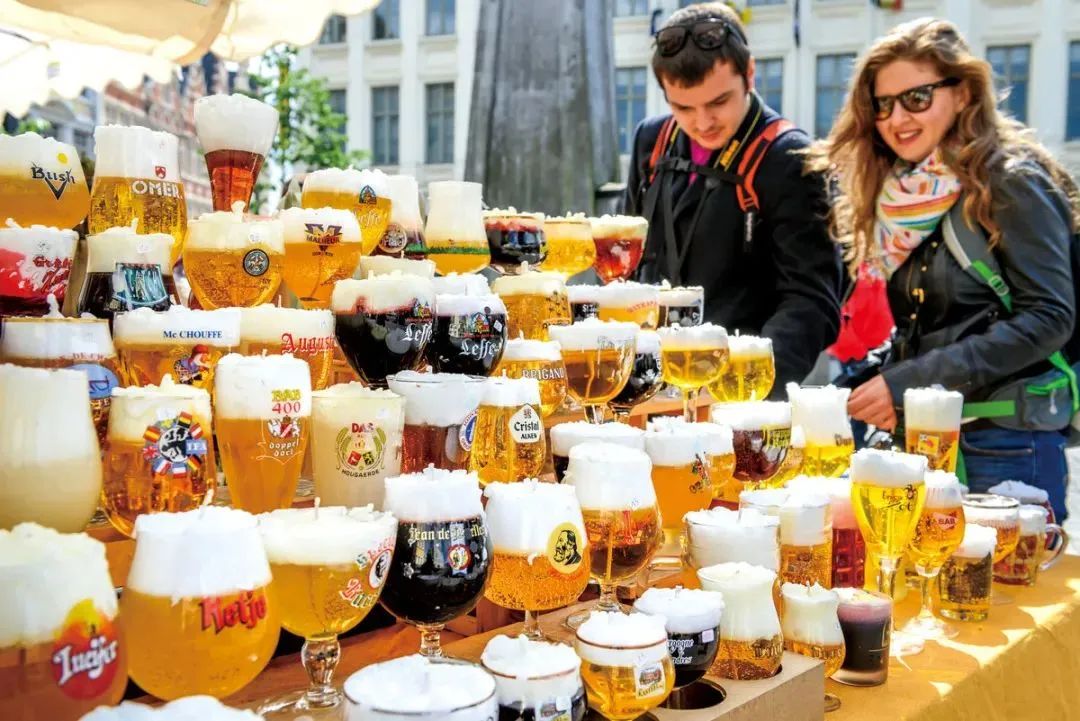
According to the characteristics of fermentation technology, all beer in the world can be divided into two categories: Ale and Lager. Alle is the upper fermentation method of yeast, which has a high temperature (15 ° C ~ 24 ° C). The yeast is active. The fermentation process produces a large number of metabolites, which can shape complex flavors. Lag is a low -temperature cooked technology. The temperature is generally lower than 10 ° C. Yeast sinks at the bottom of the wine to ferment. There are relatively few metabolites produced in the lower layer of fermentation, so the quality of Lag beer is stable and the taste is refreshing.
The upper layer of fermentation has been in ancient times, but in the era when the winemaking technology was underdeveloped, El Beer was difficult to maintain stable quality. As early as the 16th century, the monks in the Bavarian region were put in a cool cellar or cave to ferment in order to avoid adverse effects on the high temperature of summer. This is the prototype of Lag. The term "Lag" is derived from the German "Lagern". Due to historical geographical reasons, there were differences in the "beer concepts" of various feudal countries in Europe at that time, so this cellar technology did not have much impact in other regions. It was not until more than two centuries that Lag beer was carried forward by the neighboring Czech Czech Pilsen.
Grore brewed the first batch of copper cans used in "Pearson" beer
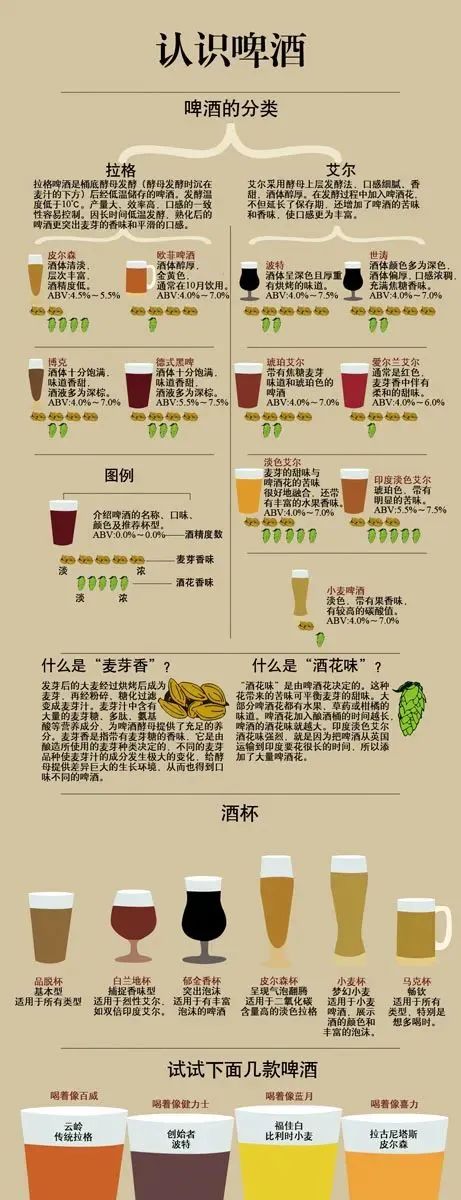
In 1838, the citizens of Pilson finally couldn't bear the local allergic El Beer, and the incident of damaging the winery broke out. The municipal government had to come to invite Bavaria's well -known winemaker Josef Group to develop new products. After investigating the investigation, Pearson had a unique brewing raw material and environmental advantage. He boldly chose the local new light malt and Sazz Poor Halo, combined with the lower -layer fermentation technology that he had controlled. Rare golden yellow transparent wine. This beer named after Pearson was launched, and it quickly occupied a tavern in European metropolises such as Prague and Paris. The golden beer has become a unique scenery on the streets of the streets. The Pilson brewing method also found a path for the large -scale industrial production of beer in the future.
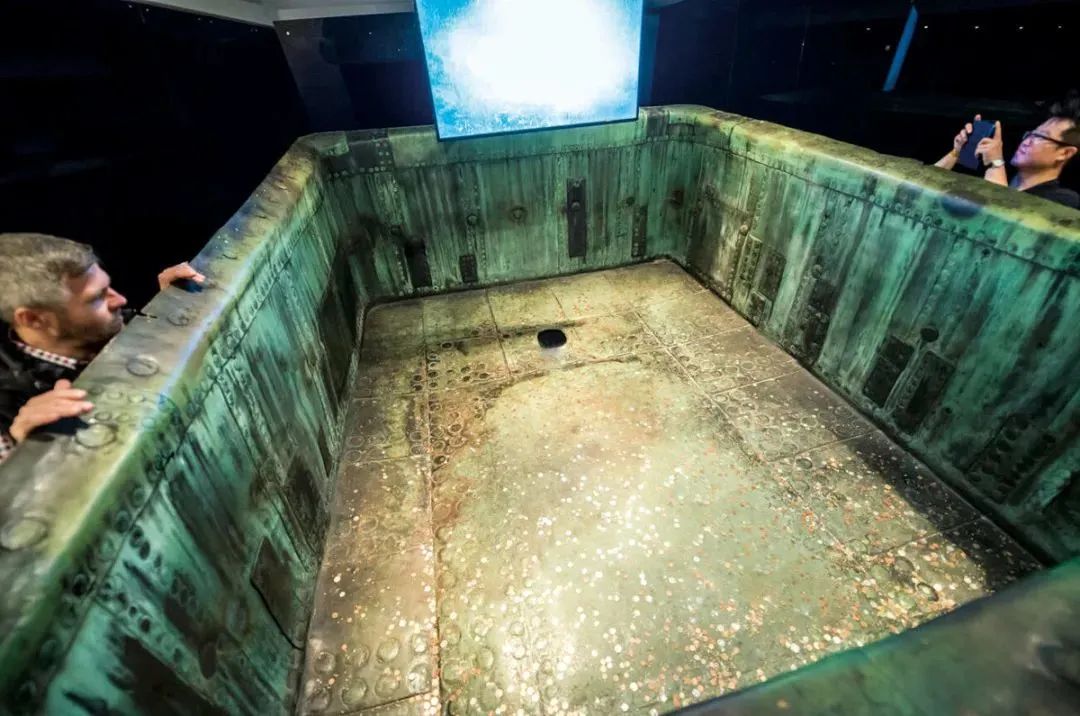
Czech "Pilrson" beer's first personality Roul
Pilson is a pale Laga beer, with a pale body and a typical beer flavor and bitter taste.
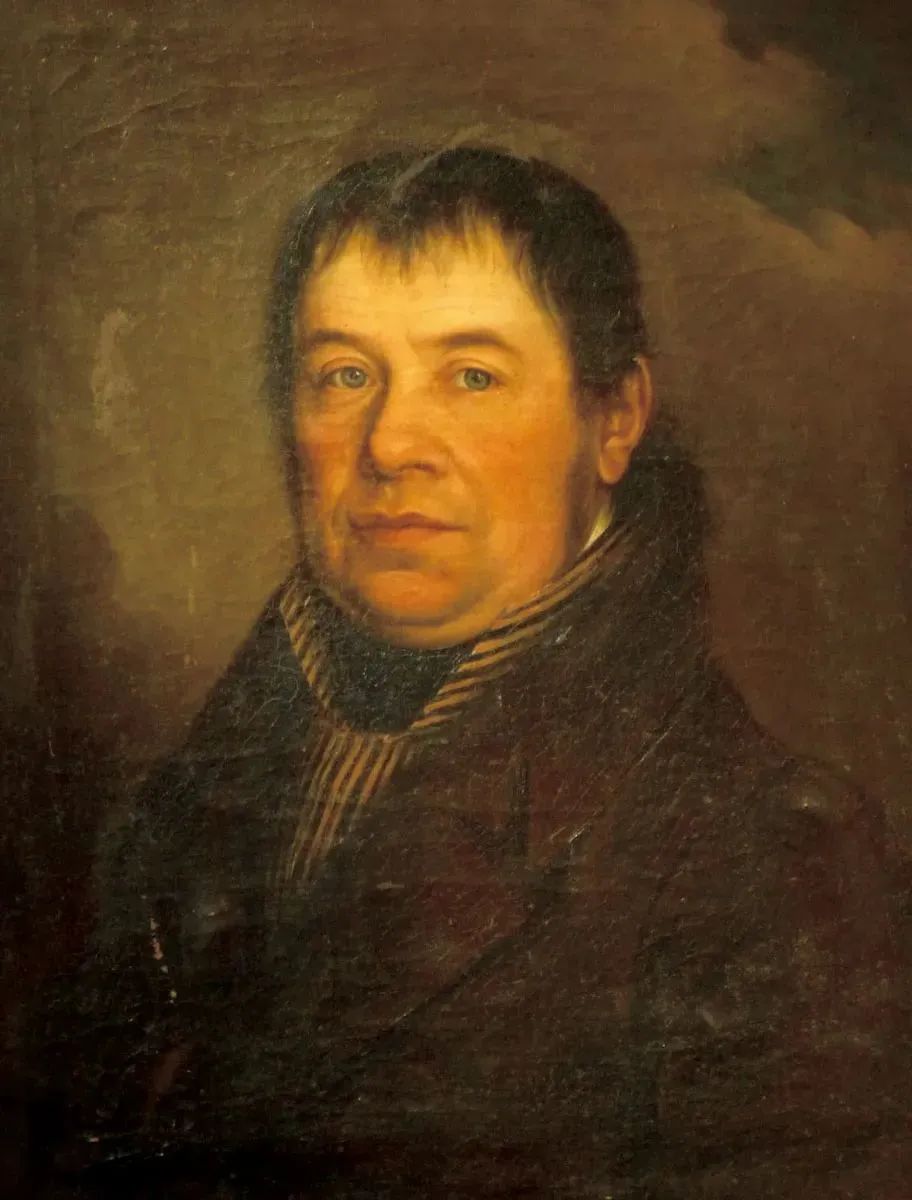
By the middle of the 19th century, beer has been handed down for thousands of years. The brewing formula spread throughout the world and continuously improved. The brewers have accumulated rich experience. But this is only in practice. Because people have never figured out what yeast is, and how it "casts" in beer, until 1857 French microbiologists Bastey confirmed the principle of alcohol production of yeast.
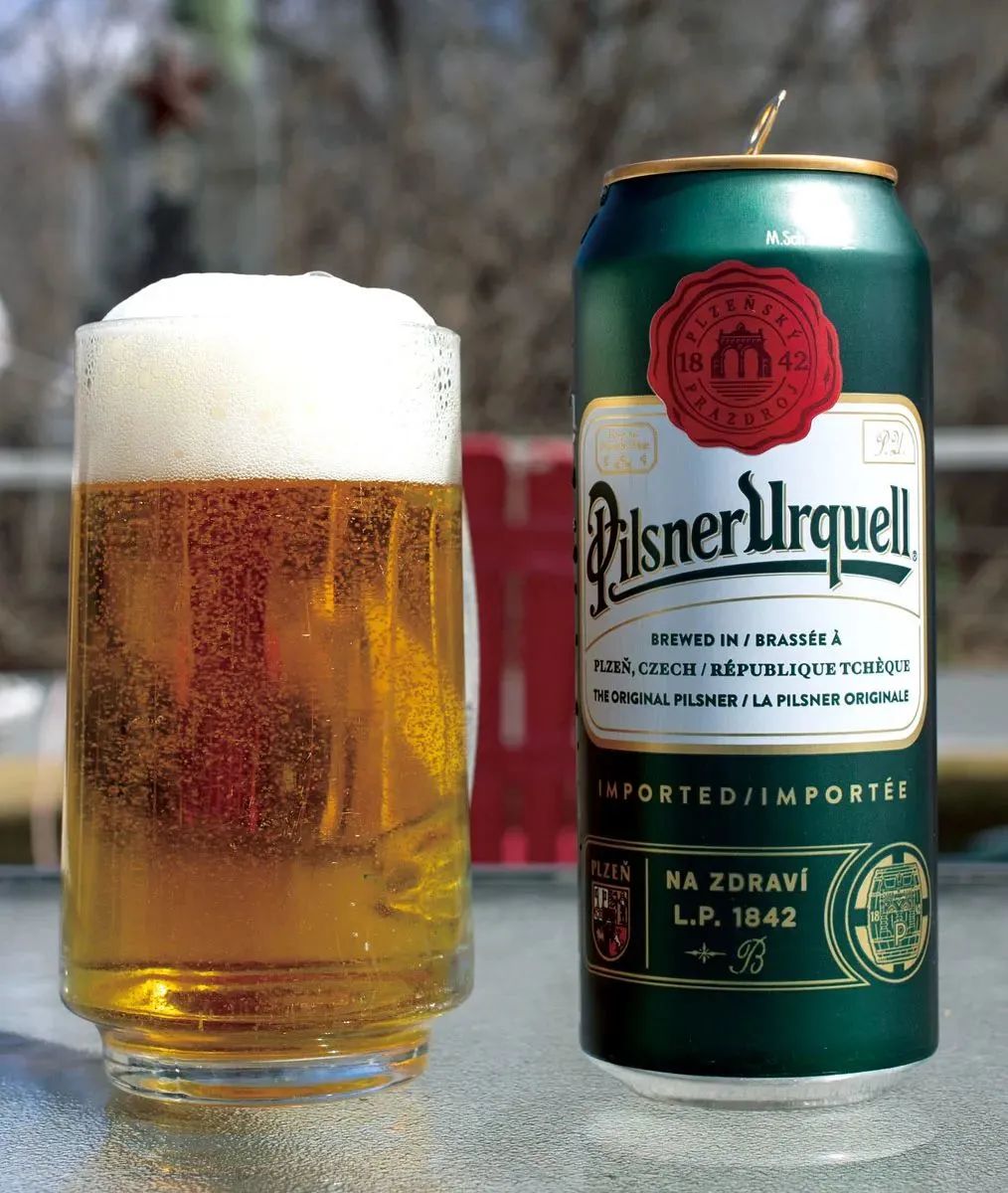
After France failed in the French war in 1870, the best beer plantation area Alsace and Lorraine were ceded to the German Empire. This prompting Baste to actively participate in the research of beer fermentation and preservation, hoping to have a snow national shame in the field of Germans. Earlier, many French brewing yeasts were used between factories. In 1871, Pasteur invented a Laggian training method that enabled the winery to produce yeast independently and effectively avoid microbial pollution caused by recycling. In 1876, Pasteur published the thesis "Beer Research", and the cooked beer disinfected by Pastel was born. From this as a starting point, the beer industry enters the track of mass production. However, the French beer industry seems to have failed to keep up with the pace of technological progress. Basteur's "Beer Revenge Plan" for Germany was eventually a dream of Nanke.
Louis Bastel's research on yeast has changed human perception of alcohol fermentation
Denmark benefits more from Bastel's research results. In the second half of the 19th century, beer was a prosperous industry in this Nordic country, and its products were even exported to the British colony India. Therefore, Basteur's beer research has attracted much attention from Denmark. At that time, Carlsberg was a small winery in Copenhagen. After learning the method of yeast cultivation and beer preservation methods of Basteur, the process process was fully transformed, and production capacity was rapidly improved. He expressed his respect to Pasteur's contributions, and in 1878, a half -body statue was erected at the entrance of the Garly Brewery, and the road in front of the door was also named after "Basteur". The gate of the elephant at the Copenhagen headquarters of Celestics Group. It was one of the entrances of the building complex of the Carlsbie Winery, and it was also a well -known local landmark building.
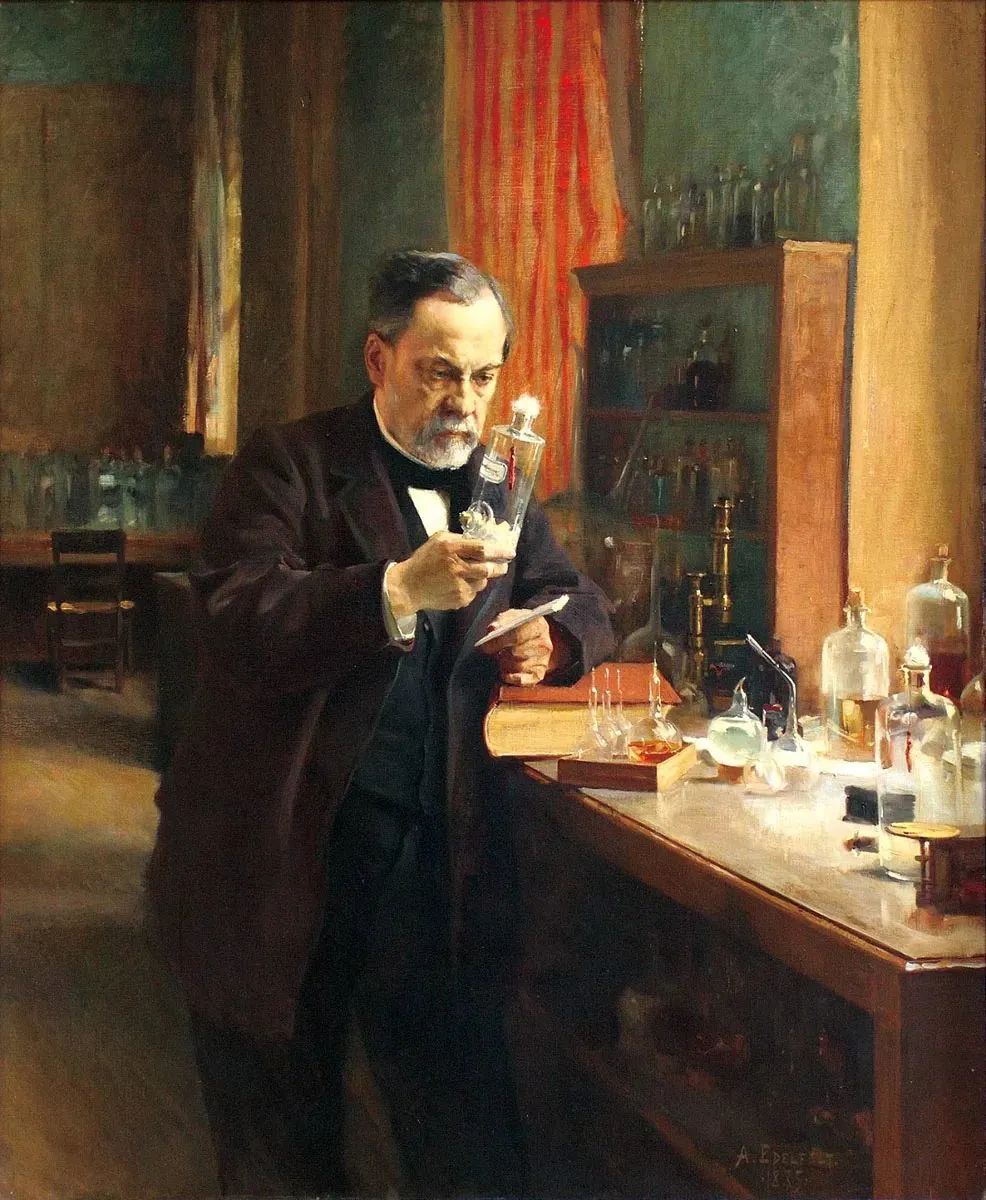
The new Carlsberg Museum was founded in 1882 by the son of the founder of the Carlsberg Brewery. There are currently three exhibition halls with a collection of more than 10,000 collections.
The taste of Carlsberg Beer belongs to the typical European -style Rachec, which clarifies glycol. After being approved by the Danish royal family as a designated supply in 1904, its trademark has also had a crown sign.
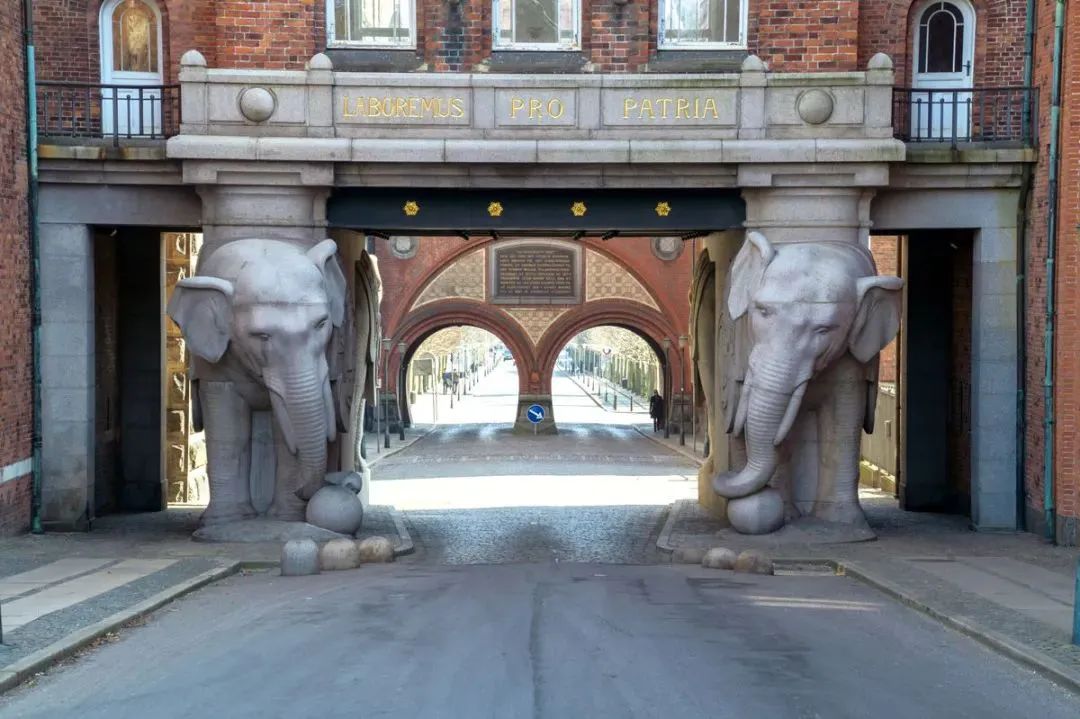
Nowadays, more and more yeast companies are constantly optimizing yeast strains. Among the two beer families of El and Laga, hundreds of yeasts have been identified, classified, category, breeding, and storage, creating a richer choice space for winemakers. "The meaning of yeast to beer is not exaggerated." In front of the yeast, the winemaker said, "We are just making maltamic juice, and only yeast can make beer."
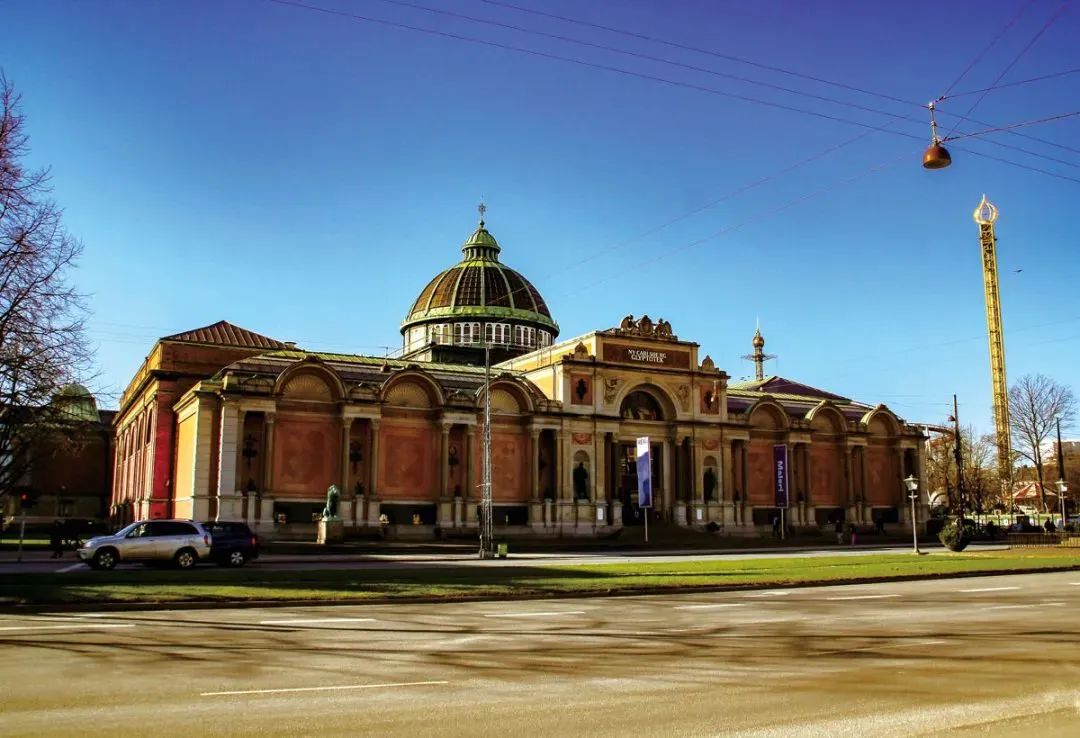
One side of the water source
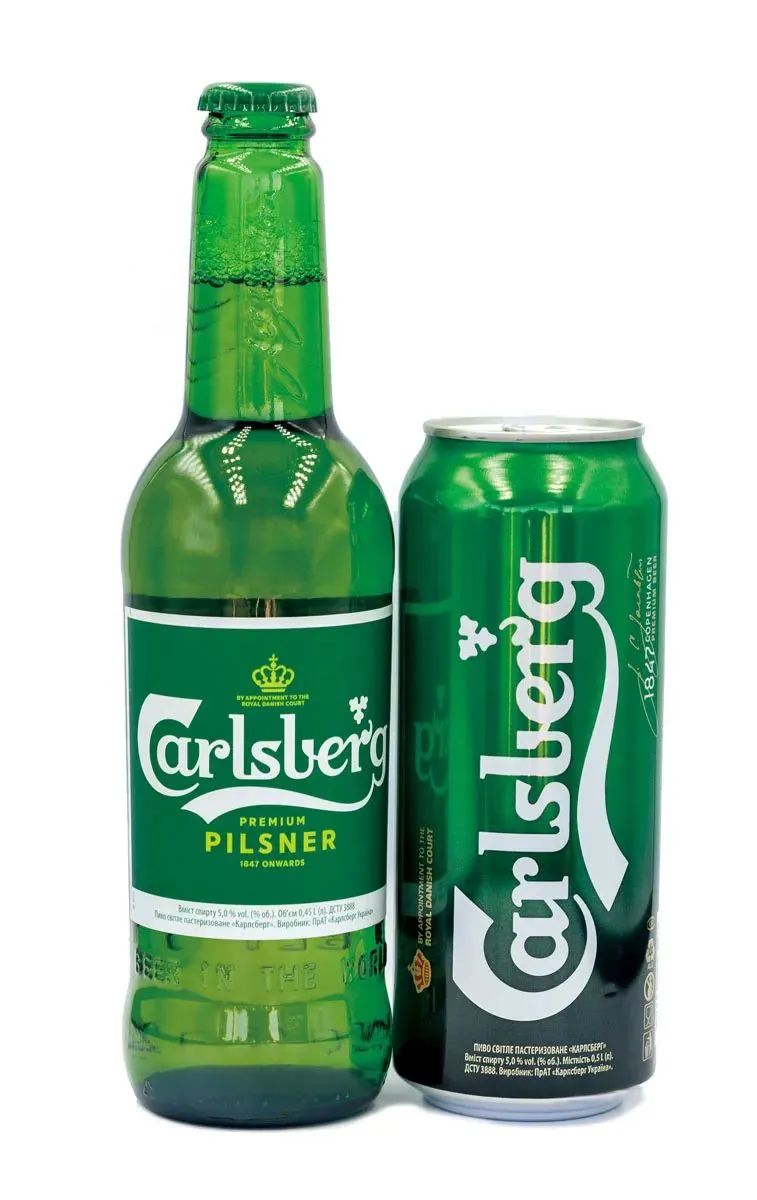
There is no doubt that most of the ingredients of beer are water. Depending on the alcohol, the proportion of water in beer can be as high as 98%. Therefore, the importance of water quality for beer quality cannot be underestimated.
In fact, the characteristics of water sources in different regions have already set the tone of the evolution of local beer style. For example, when using water sources with high mineral salt content, dark malt is generally added for neutralization. ); The water quality in central Europe is better than the British region and can better achieve acid -base balance. Therefore, the color of beer in Germany, Austria, Czech Republic and other places is slightly lighter. Among them, the water quality of the Czech Pilson area is softer, which can highlight the taste of malt and beer.
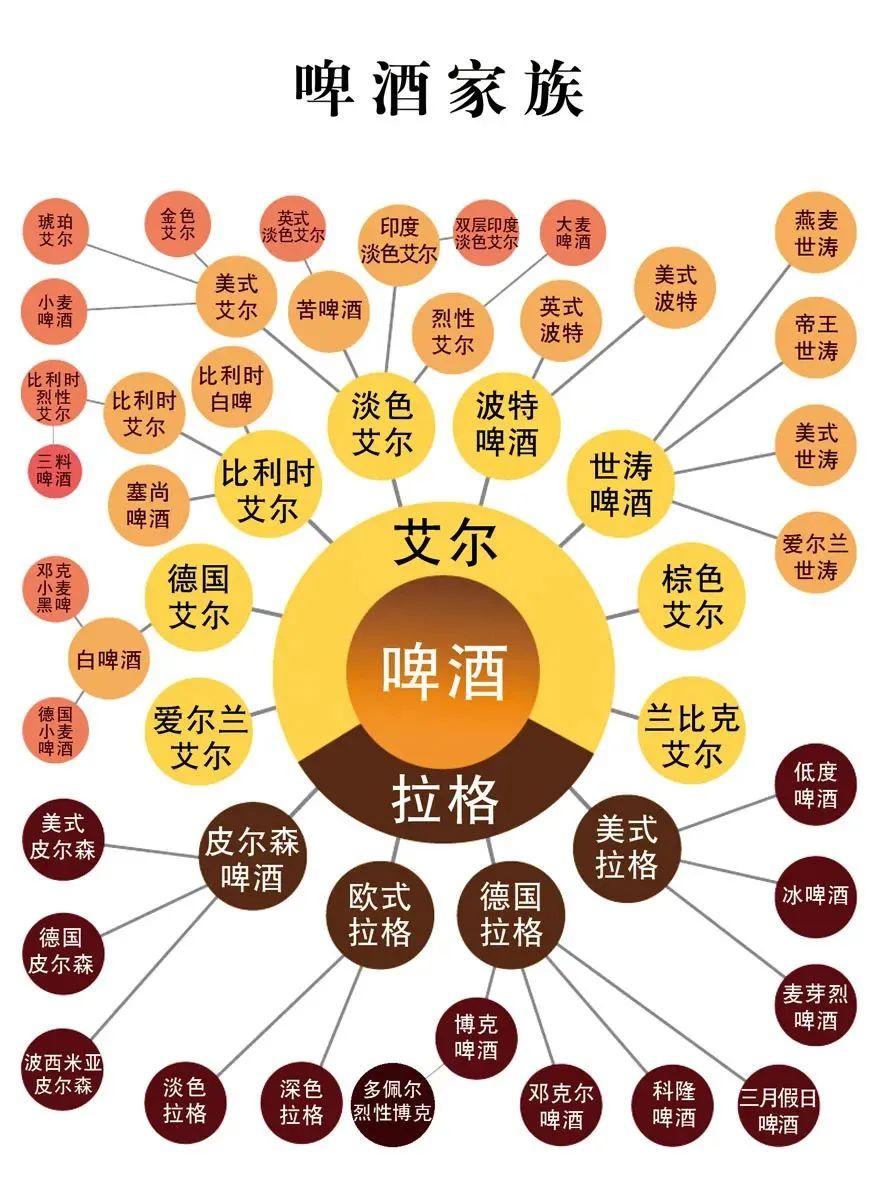
Britain and Ireland are popular in black beer. One of the reasons is that the local water quality is large and alkaline. In order to achieve a acid -base balance and increase the taste, dark or even black malt brewing beer will be selected.
Technicians are testing the purity of beer
However, with the development of the modern chemistry industry, water quality is no longer a decisive factor affecting the flavor of beer. In the non -traditional origin of certain beer, brewers can also produce beer with a stylized style by regulating the pH of the water. For example, the water quality of the Bolundry area on the British River in the United Kingdom is very special. It contains a large amount of calcium sulfate. It is conducive to extracting the bitterness of beer in the brewing and reducing the stimulus. This is also the key to the success of the IPA in the region. Although Burton's water is difficult to copy, it can still achieve a good imitation effect by adding mineral salt. This approach has been widely used, and there is also a professional name- "Burton Water Qualification".
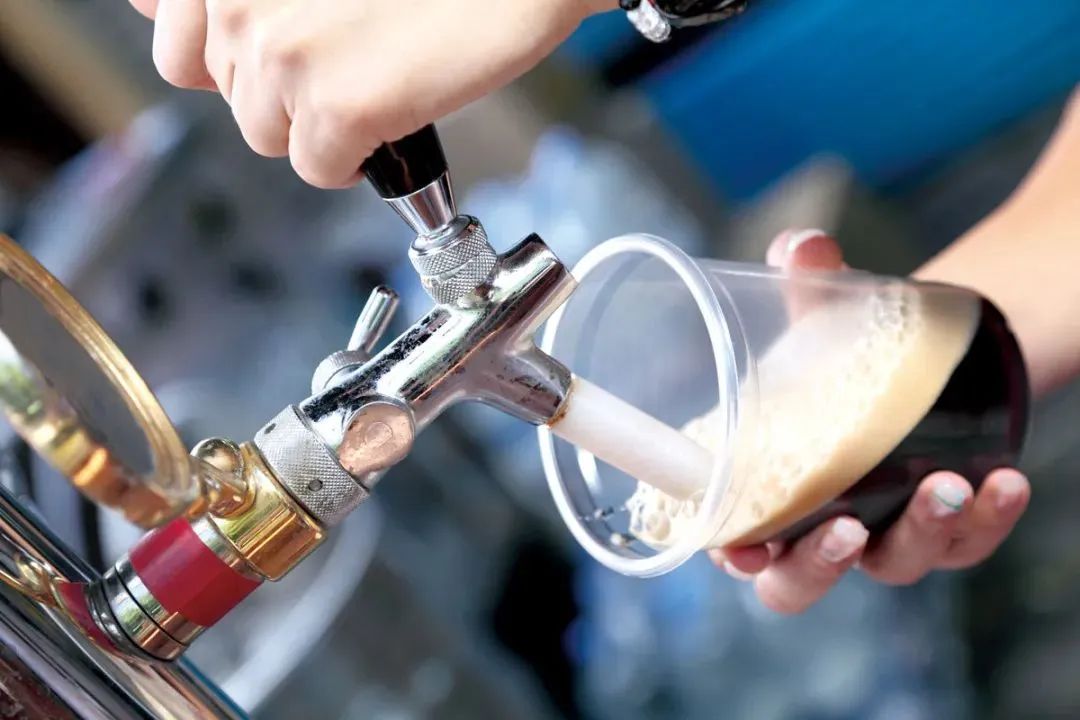
With the development of the modern chemistry industry, winemakers can produce beer with close -up styles by regulating the pH of water. For example, Budweiser's factories are all over the world, and it is difficult for consumers to distinguish the place of origin from the taste. The picture shows the Shenyang factory production line of Baili Yingbo.
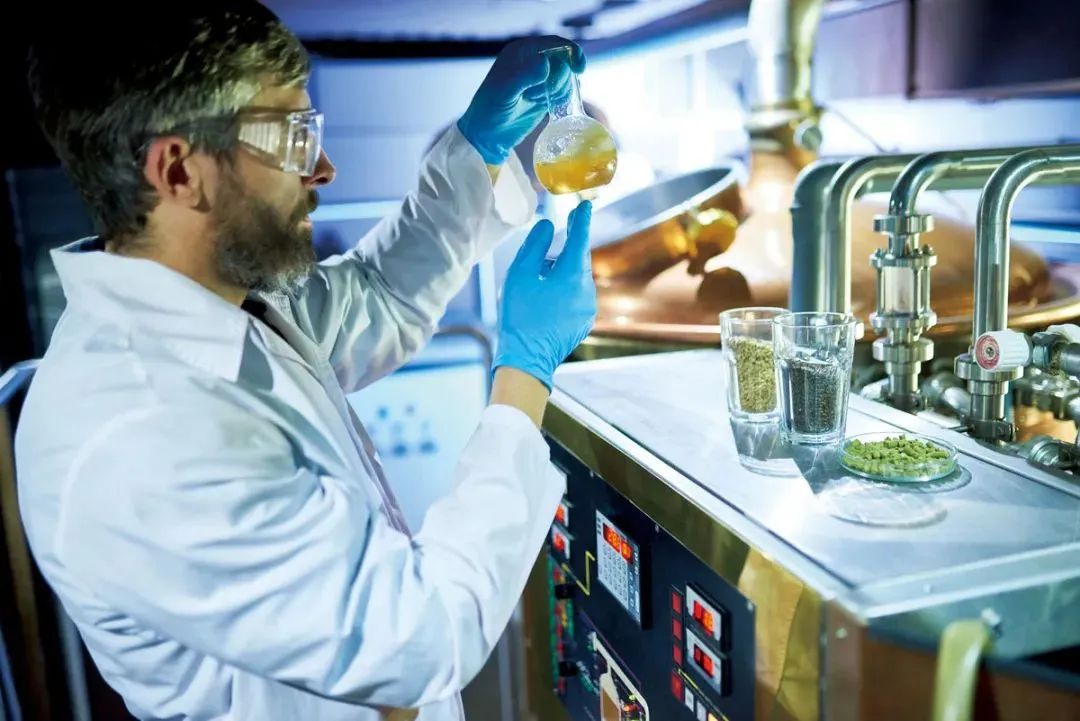
The most classic example is the United States. The United States is almost not the origin of any traditional beer, but it is currently the most types of craft beer producing in the world and the largest output. This is especially true for industrial production beer. For example, Budweiser, factories are located in the United States and even all over the world. The annual production of tens of millions of barrels of beer is produced. From the taste, consumers cannot distinguish the place of origin at all. Whether you like Budweiser or not, it is undeniable that this is a praised technical achievement.
Harbin Beer is the earliest beer brand in China
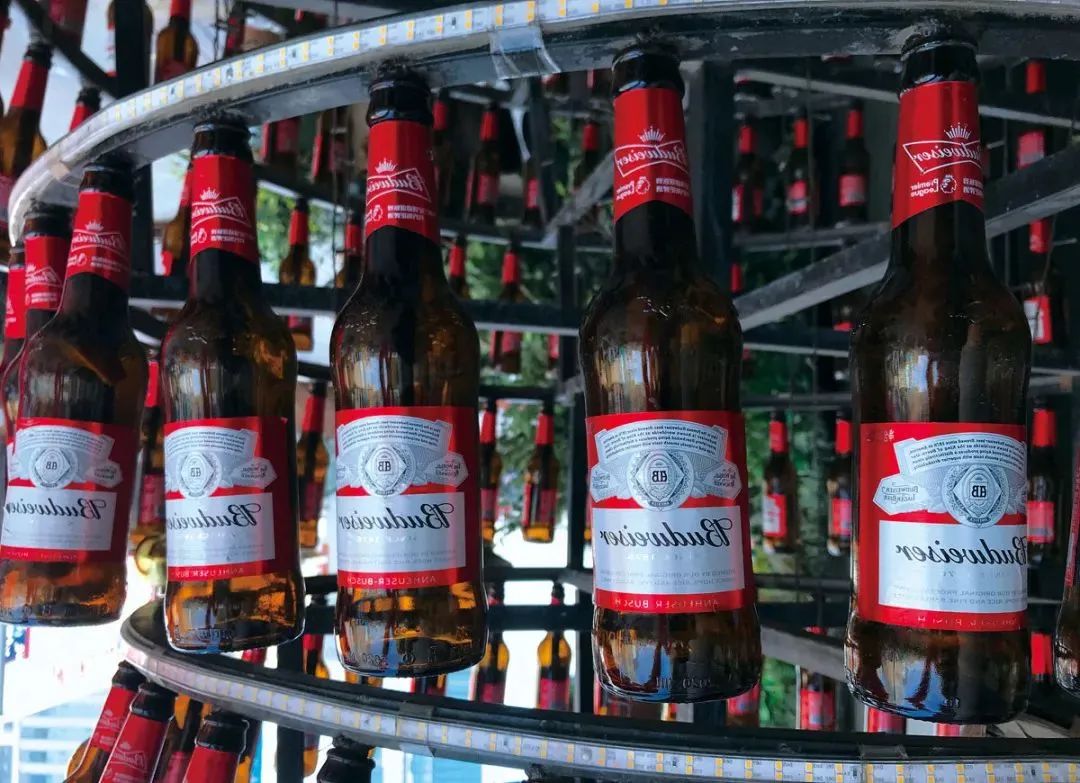
Yanjing Beer Production Line. Beijing Yanjing Beer Company was founded in 1980 and is one of China's largest beer company groups. China has now become a big country in the world in the world.
Qingdao characteristic culture -bags for loose beer
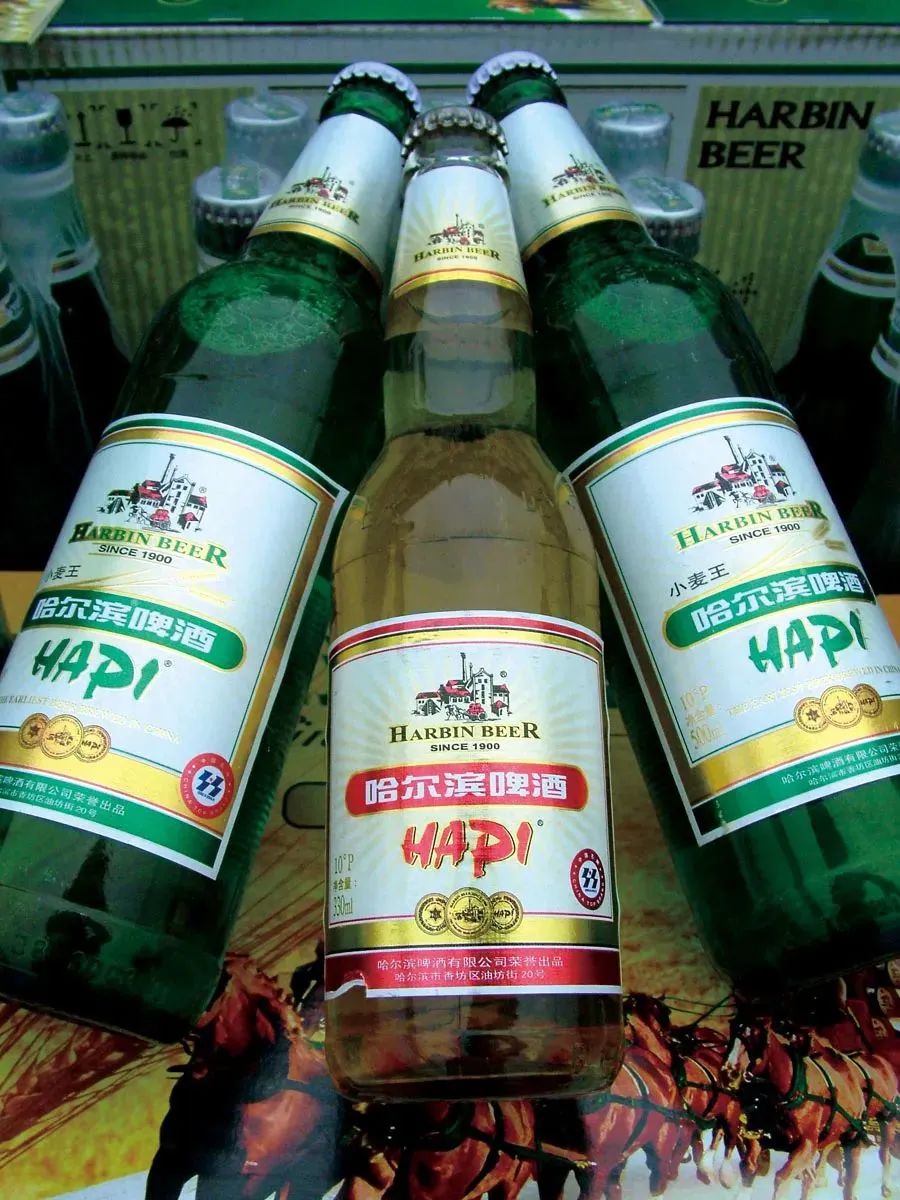
This article contains the "World Knowledge Pictorial" magazine 2022, No. 7
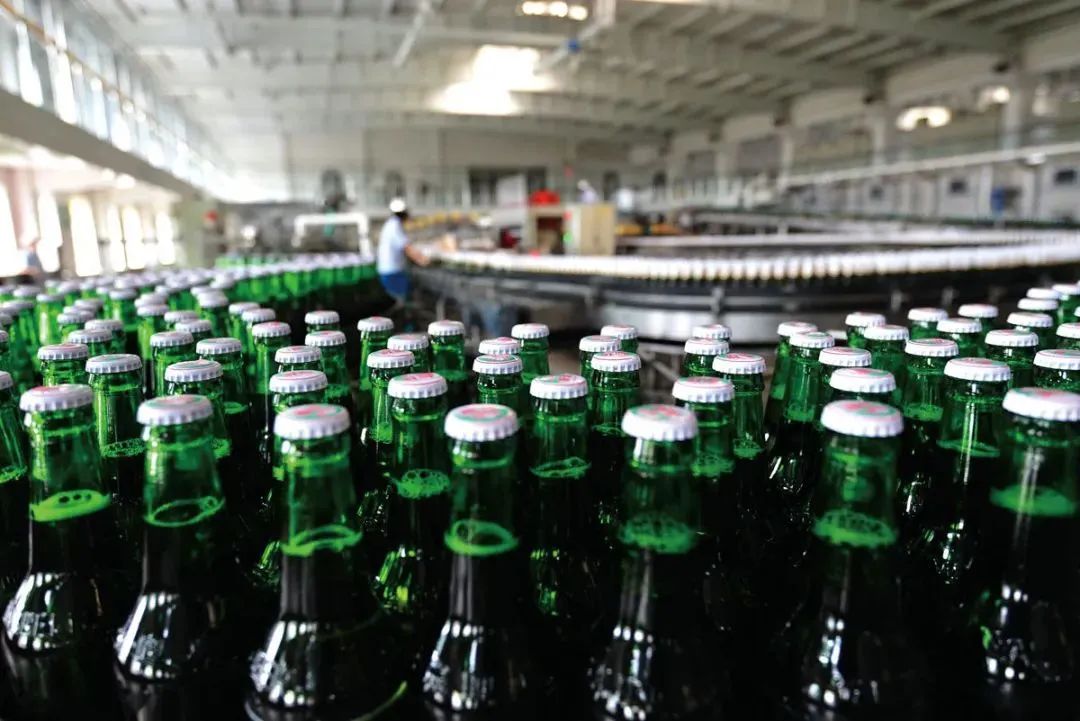
Editor in charge: ZAN
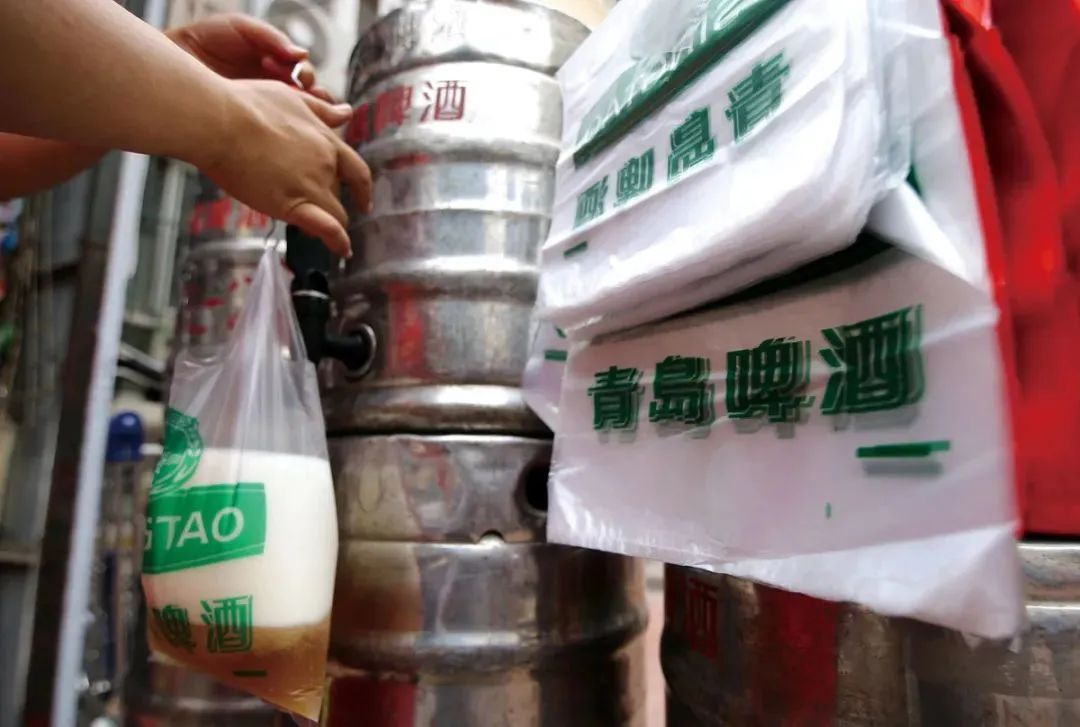
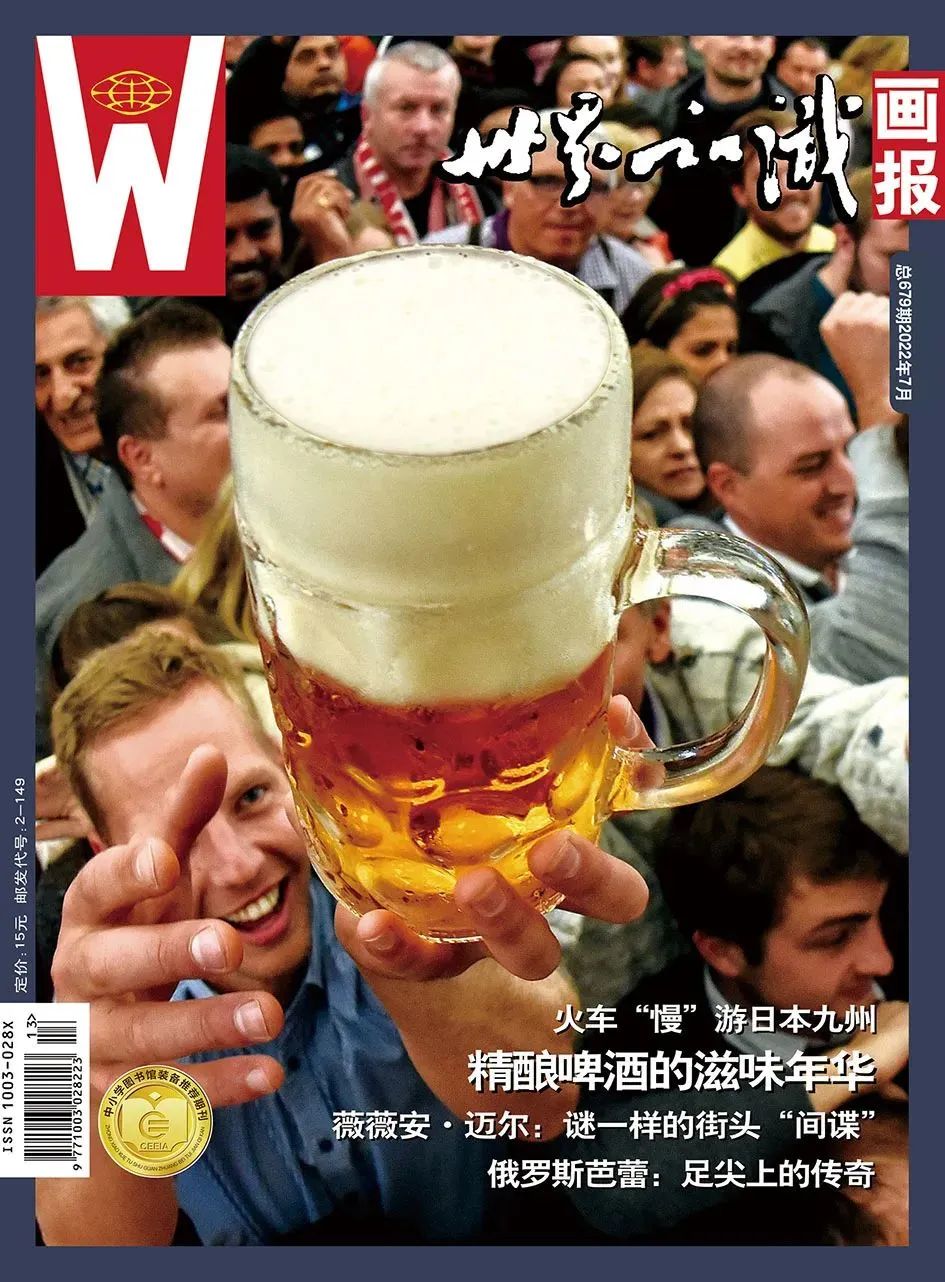
- END -
In the tenth autumn of the tenth day of July, eat more 4 dishes, reasonable "stick autumn", and eat healthy and healthy.

No matter which step people go, they have to find some fun and think about it. Yes...
The Waofeng Viants Festival in Longhua District, Haikou City will be launched on July 31st

The Five Treasures of Treasures and Taro hosted by the Rural Revitalization Bureau...